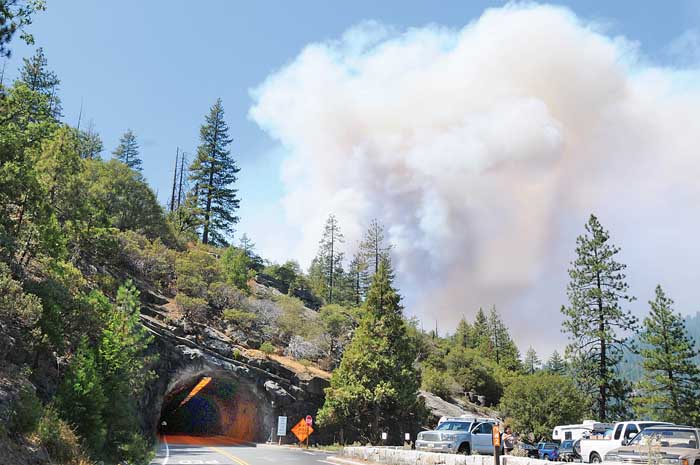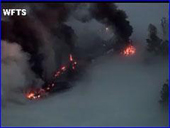In a refreshing example of accountability, Dave Uberuaga, the acting Superintendent of Yosemite National Park said “I take full responsibility” for the planned 90-acre prescribed fire that escaped and became the 7,425-acre Big Meadow fire.
Mr. Uberuaga’s statement is in stark contrast to Mount Rushmore’s Superintendent Gerard Baker, who according to the Rapid City Journal said after demonstrators breached the monument’s security system on July 8 and hung a huge banner on the sculpture:
“Is it too bad it happened? Yes. Do I think it was my responsibility? Absolutely not. We did everything proper.”
The day following the incident Mr. Baker said:
All security measures functioned exactly as designed.
That statement turned out to be false, and was contradicted later by the National Park Service’s acting Regional Director.
But getting back to the Yosemite fire, an investigation team is on site gathering information about what went wrong two weeks ago when the prescribed fire escaped and required road closures and the evacuation of the community of Foresta. So far the fire has cost $15 million and has been fought by 1,300 personnel.
Acting Superintendent Uberuaga said:
I take full responsibility…I have apologized to the communities. I regret that we had to evacuate them. And I regret the situation we find ourselves in. Still, prescribed fire is a necessary tool in the park.
The park staff has conducted 59 prescribed fires since 2000 for a total of 10,000 acres, including one in July near the community of El Portal.
Some people take a fatalistic attitude toward prescribed fire, saying, “Oh well, prescribed fires do escape sometimes”. Occasionally there may be some events that are totally unpredictable that could cause a fire to escape, but those are very rare. I am of the firm belief that if you have the following, you can be successful with your prescribed fire program.
- A good ignition plan
- Skilled personnel to execute the ignition plan
- Adequate fireline preparation
- Skilled holding personnel, properly deployed, and in sufficient numbers
- Adequate logistics, i.e., equipment, water, hose lays, drip torch fuel placement
- Skilled suppression forces held in reserve for quick deployment
- An accurate and current spot weather forecast
- A skilled burn boss with at least 12-15 years of wildland fire experience
Note that the word “skilled” is used in four of the eight points.
Again, it is refreshing that the acting Park Superintendent is taking responsibility for the escape. That is the appropriate response instead of saying “We did everything proper”, or everything “functioned exactly as designed”. Which would have been crap, of course.
I have no knowledge of what caused the Yosemite fire to escape, and will make no judgment until the report comes out, but typically an investigation team would point to a failure in one or more of the eight points listed above.
And, congratulations to acting Superintendent Dave Uberuaga for stepping up and being accountable.
UPDATE: The investigation report on the fire was released January 10, 2010.







